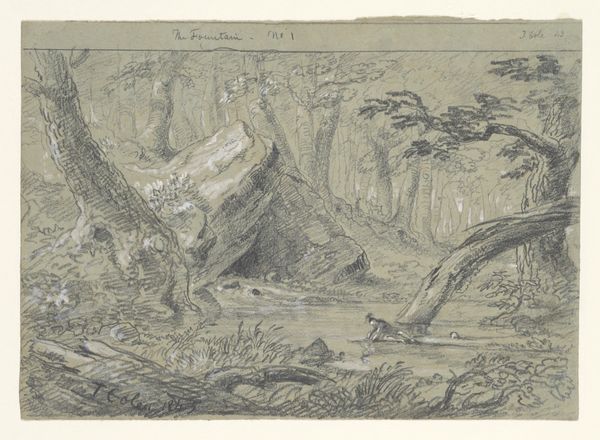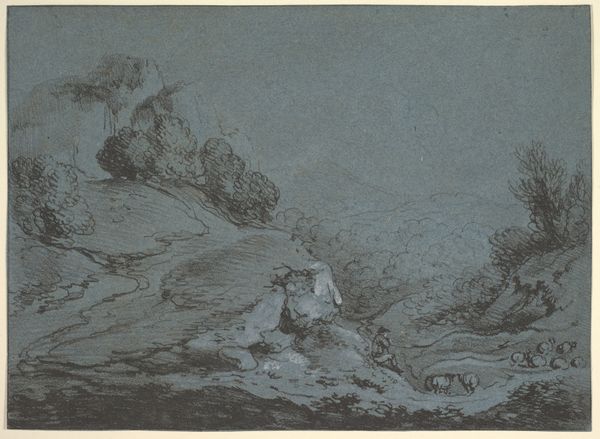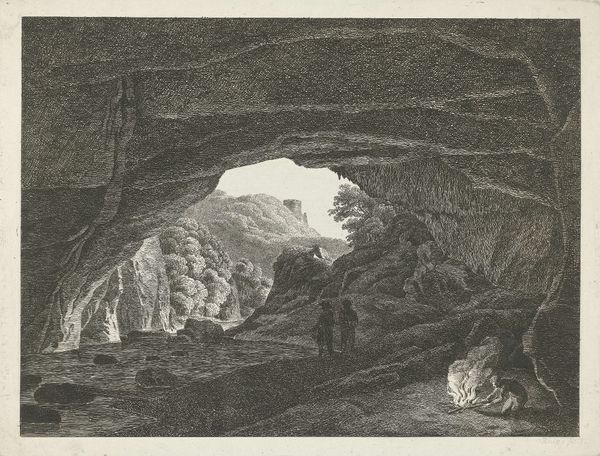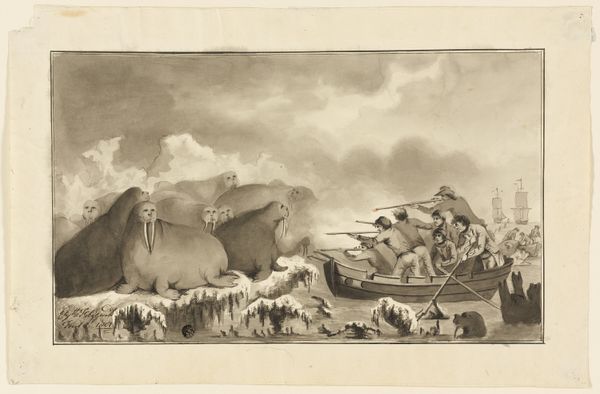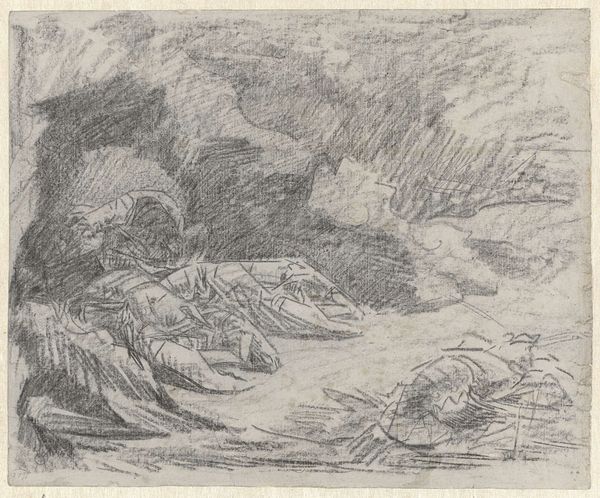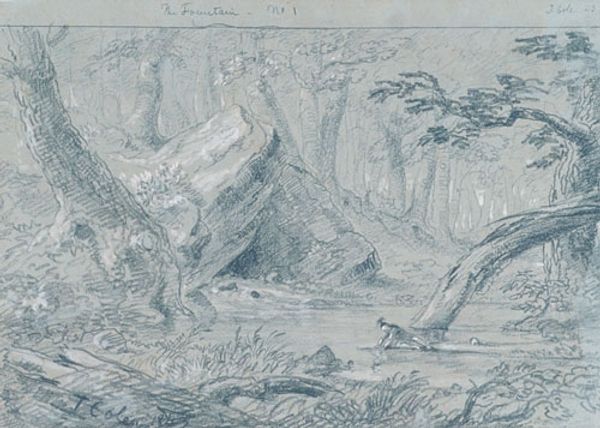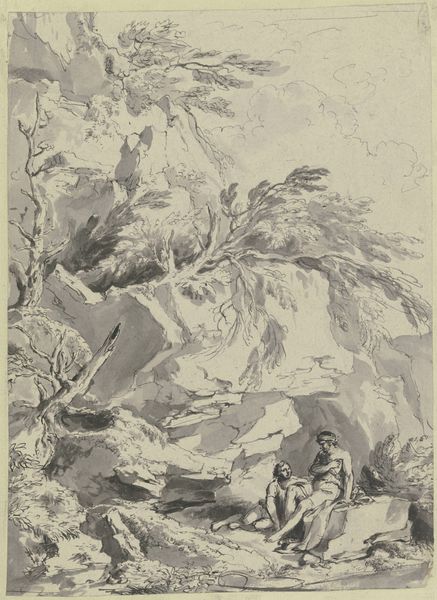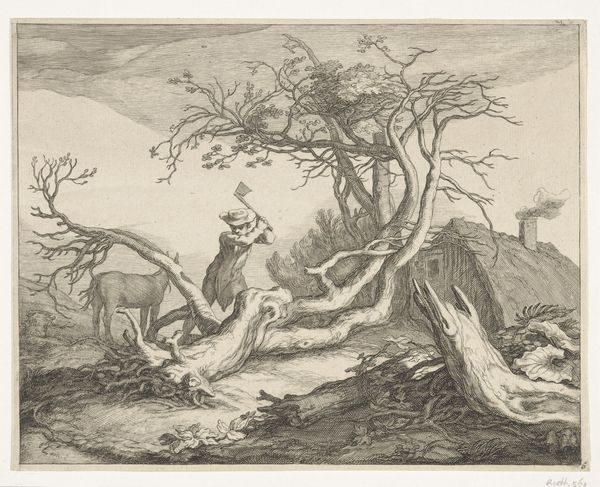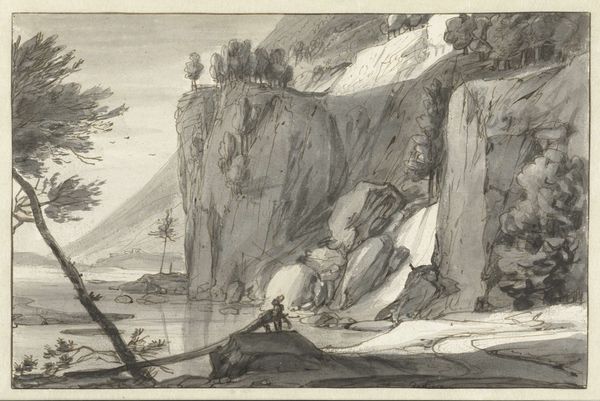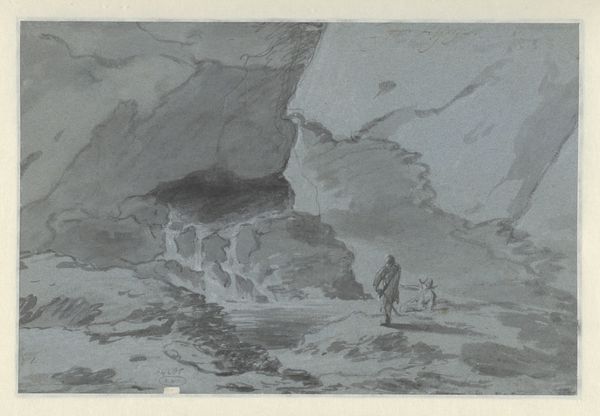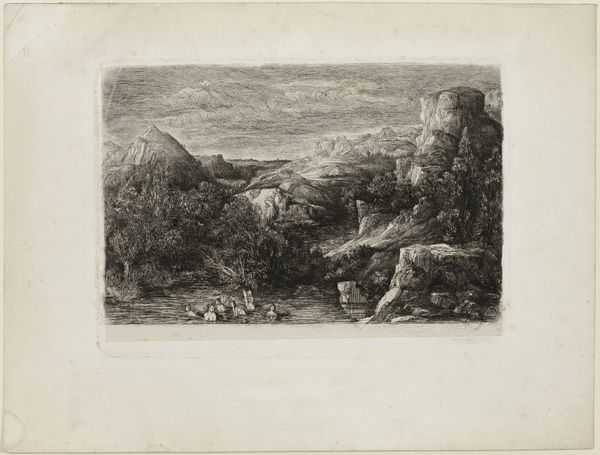
drawing, paper, chalk, graphite
#
portrait
#
drawing
#
baroque
#
paper
#
pencil drawing
#
chalk
#
15_18th-century
#
graphite
Copyright: Public Domain
Curator: This drawing here at the Städel Museum, "Two Jaguars with Their Young in a Rocky Cleft," is by Johann Elias Ridinger. It’s rendered in graphite, chalk, and pencil on paper. Editor: It’s a fascinating tableau. At first glance, the monochromatic palette lends the scene a quiet, almost ethereal quality, like a faded memory. Curator: Ridinger was well known for his depictions of animals, particularly horses and hunting scenes. While undated, this work certainly reflects the Baroque interest in the natural world, aligning with the scientific inquiries of the period. Editor: And it’s intriguing to see jaguars specifically. Given Ridinger's European context, were these animals based on direct observation, or derived from second-hand accounts and perhaps even myth? The posture of the jaguar on the rock seems almost regal, placing it in a position of power. How much of that projection relies on European preconceptions? Curator: That's an important question. Visual depictions, even in scientific illustrations, carried a heavy burden of colonialist views. These artworks often inadvertently served as tools of domination and classification of the natural world, even framing it as resources for use. Editor: Absolutely. And what does the protective posture of the jaguars toward their cubs tell us? Family becomes a crucial symbolic element. It invites consideration of larger power structures, perhaps suggesting commentary on threatened social orders. I can't help but think about class hierarchies in those times and wonder if that kind of dynamic might have seeped in. Curator: That's an insightful point. While Ridinger's intent remains somewhat ambiguous, these observations open up space for analyzing how cultural anxieties are projected through animal representation. These animals are, perhaps, a screen for other concerns. Editor: It certainly compels one to look beyond the surface realism. The subtle details, from the textures of the fur to the angular rock formations, create a compelling narrative far beyond just wildlife illustration. I’ll definitely need to examine the social and cultural atmosphere from which the image emerged more closely. Curator: It is these layers of social and historical contexts that elevate what appears to be just another rendering into a really striking art work, something that provides food for the spirit and the mind, don't you think? Editor: Absolutely. It is so important to bring current voices to what once may have seemed so removed, so we may have another story.
Comments
No comments
Be the first to comment and join the conversation on the ultimate creative platform.
